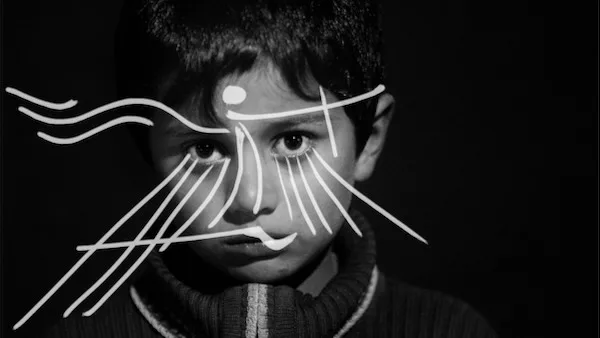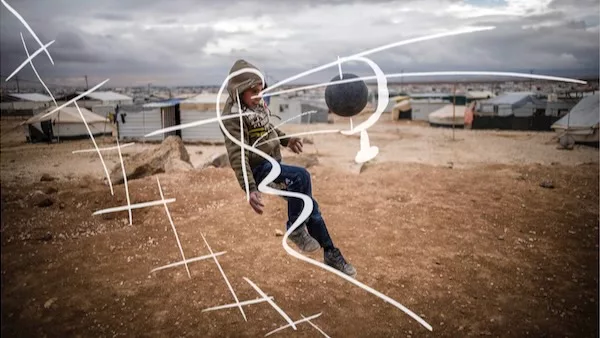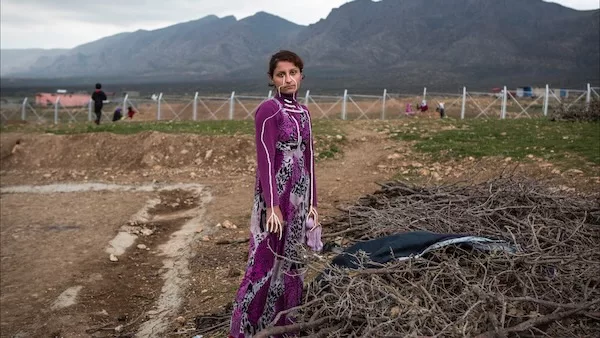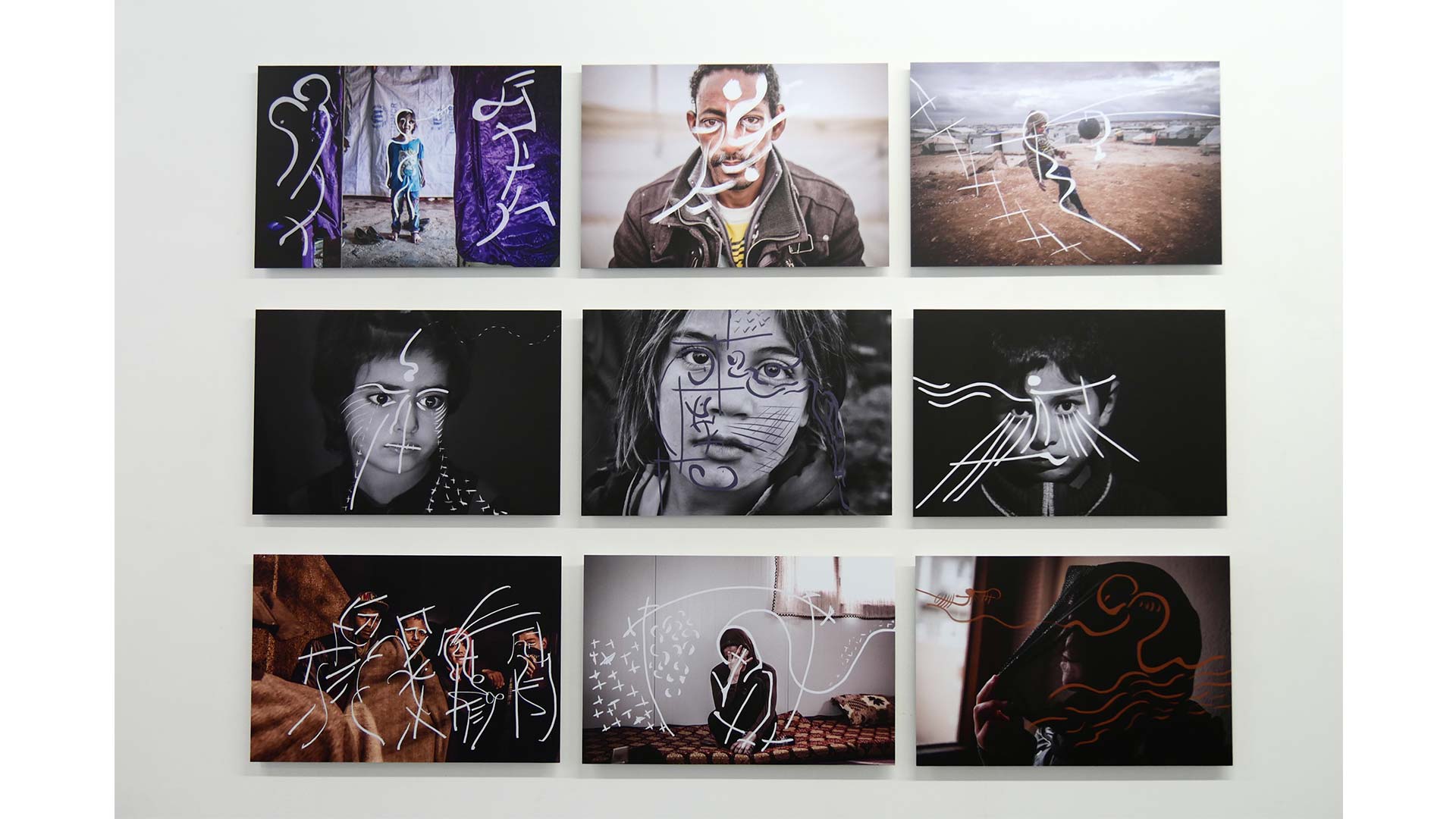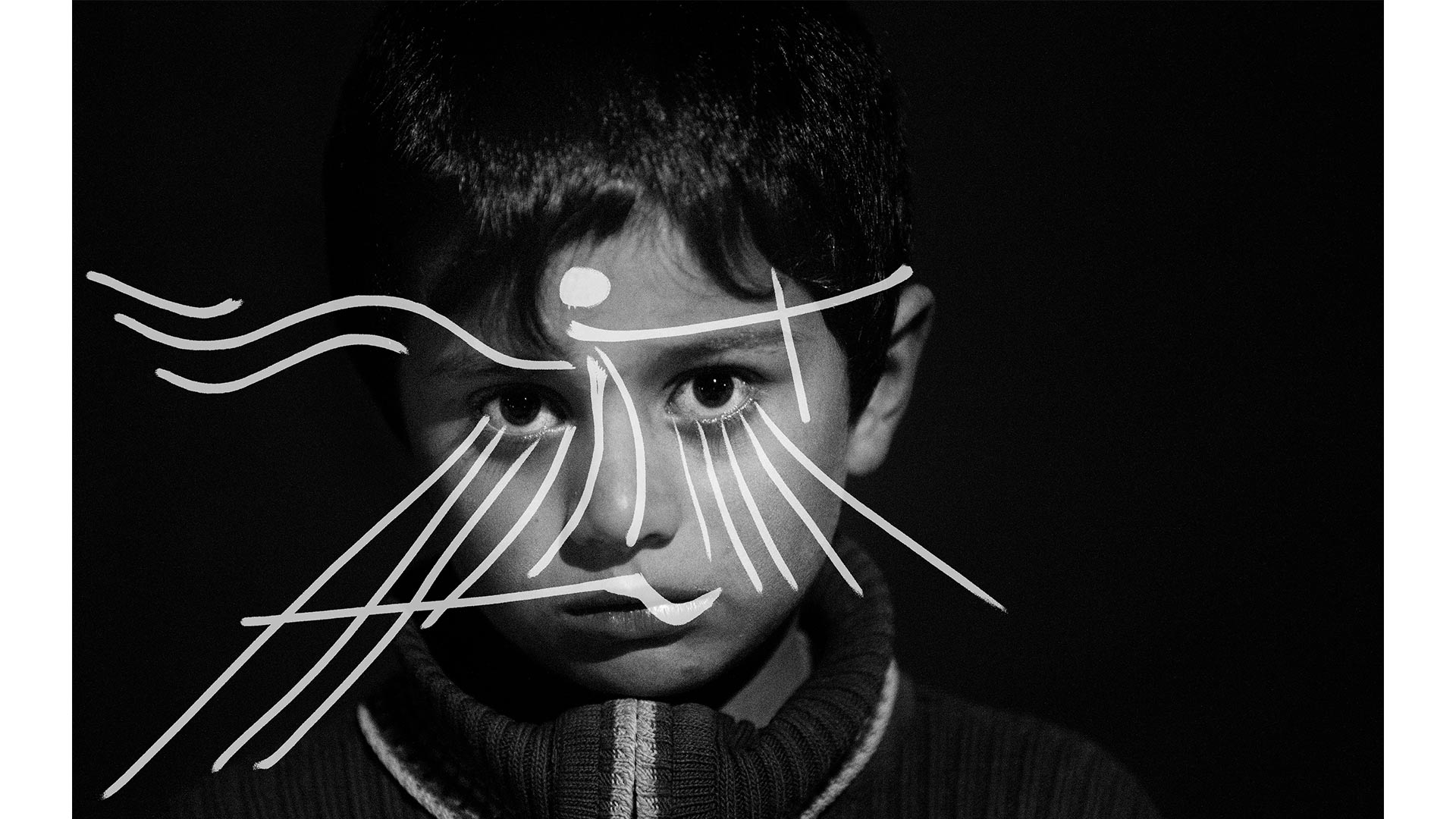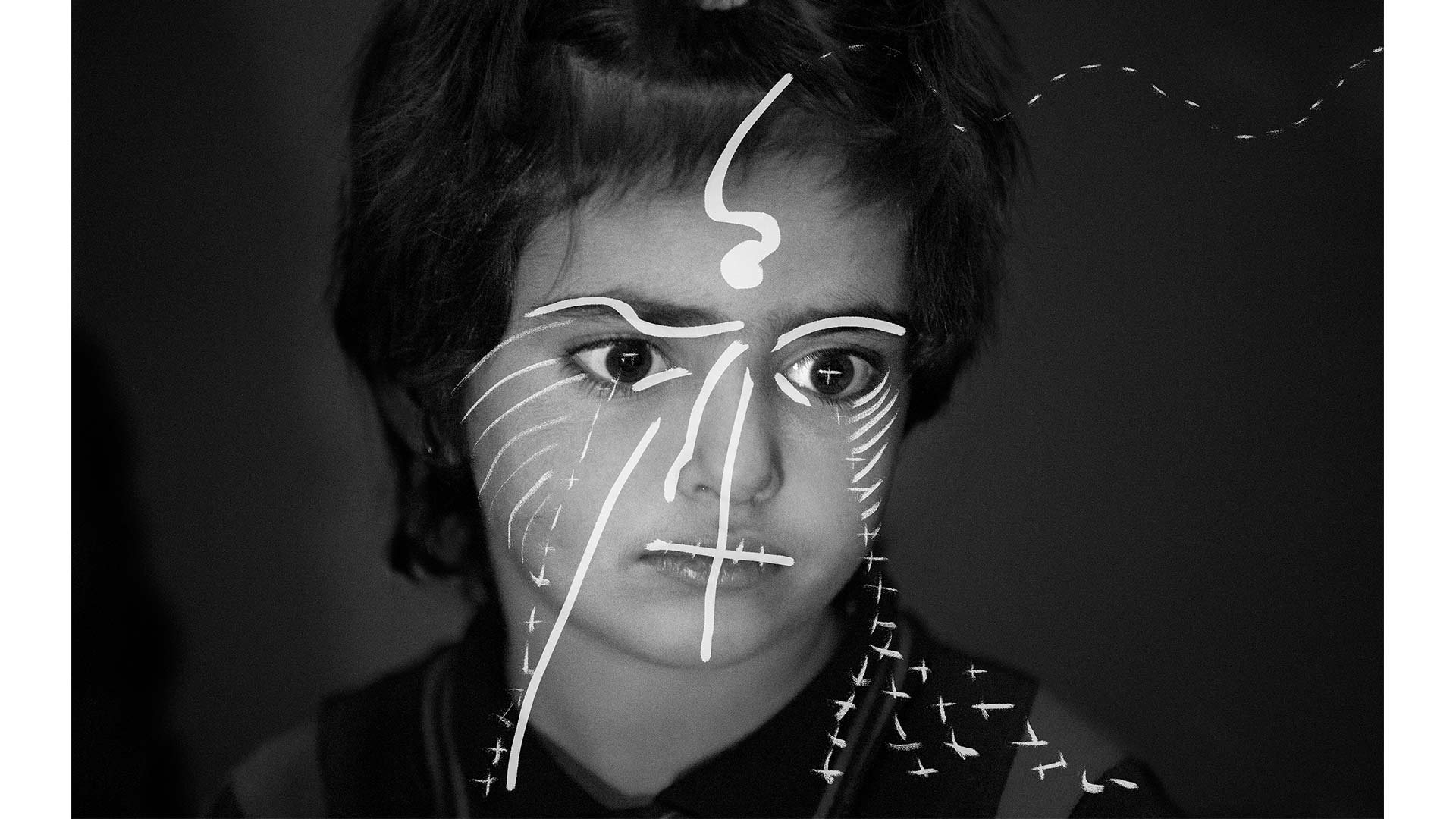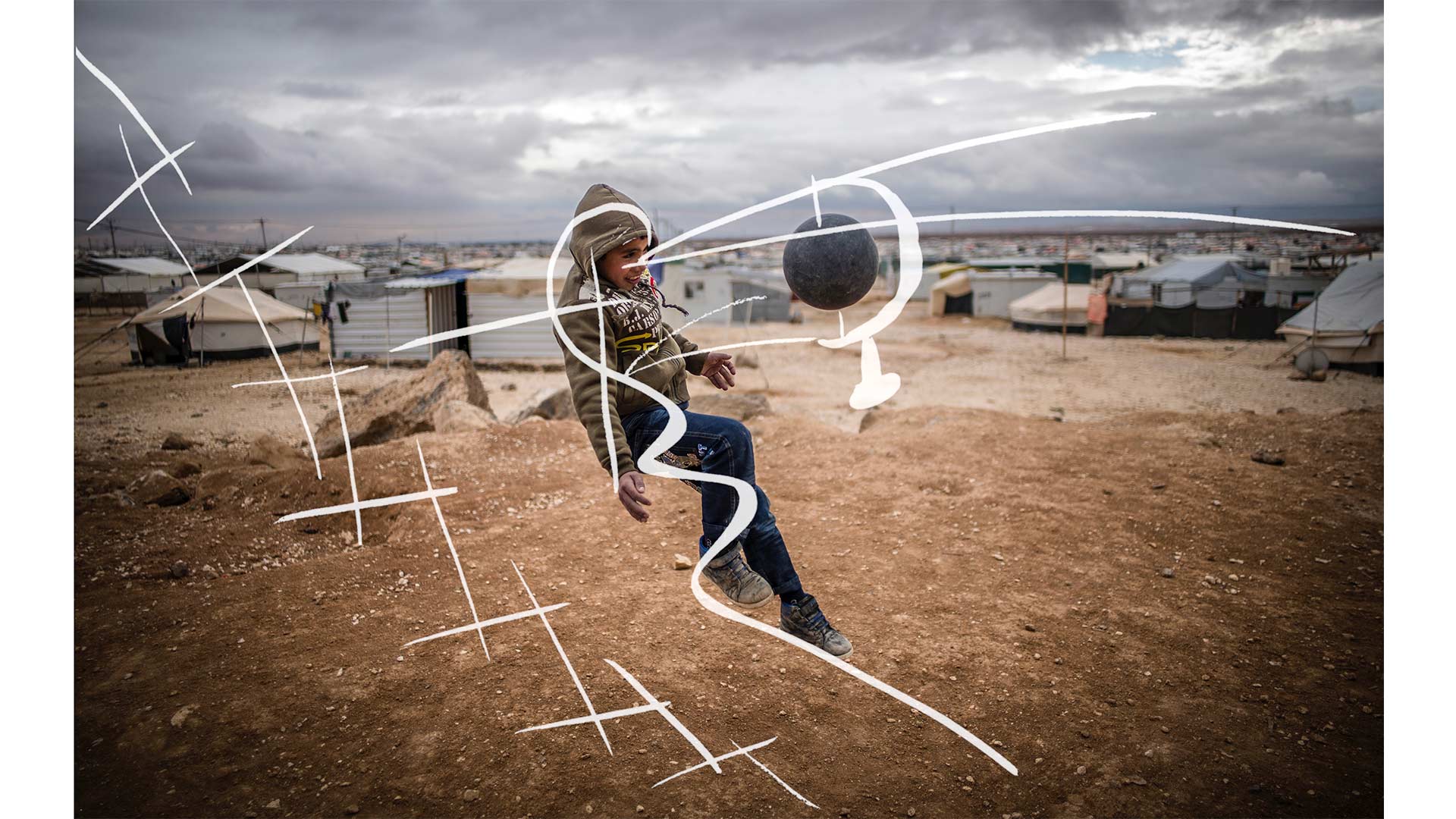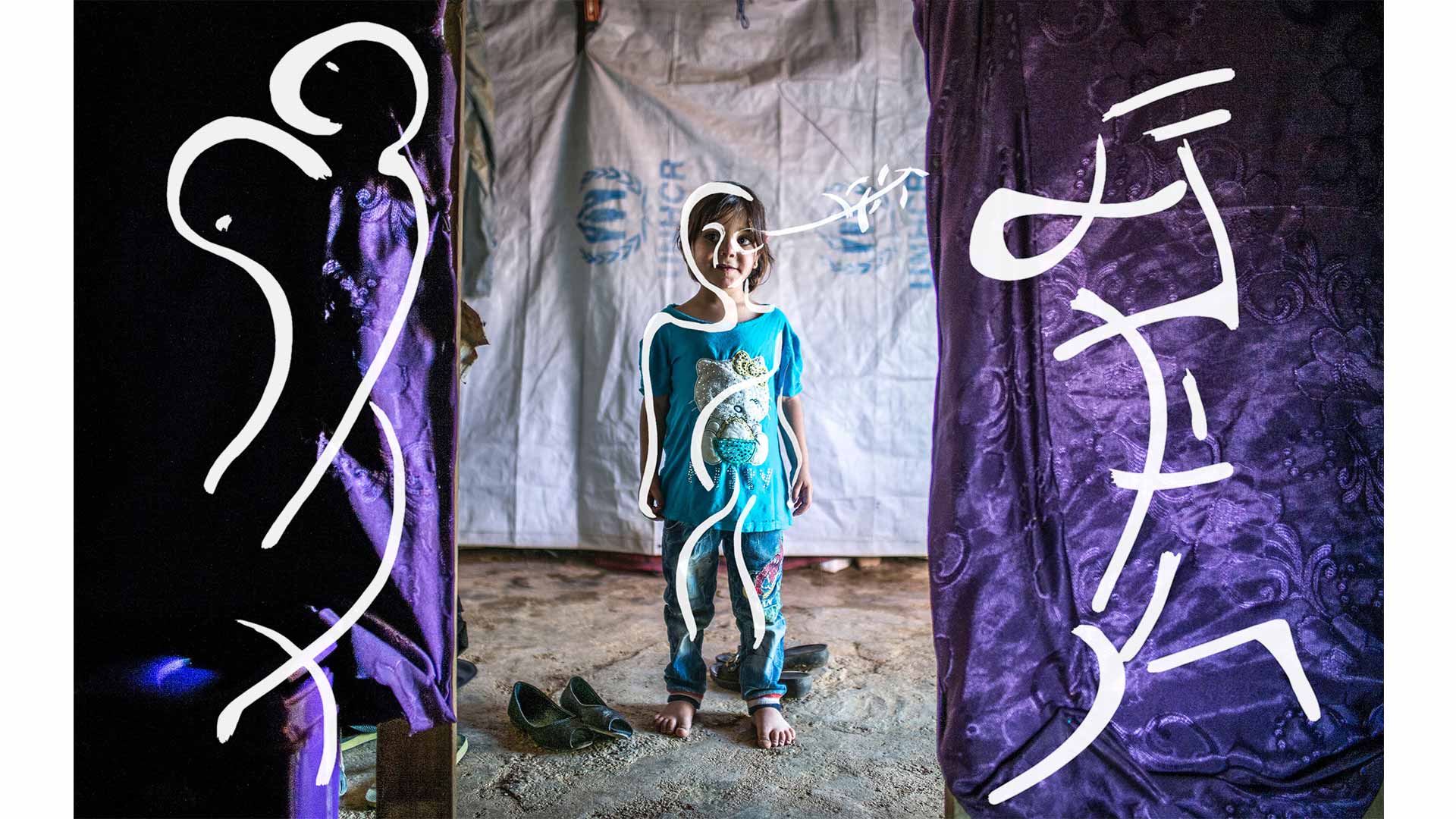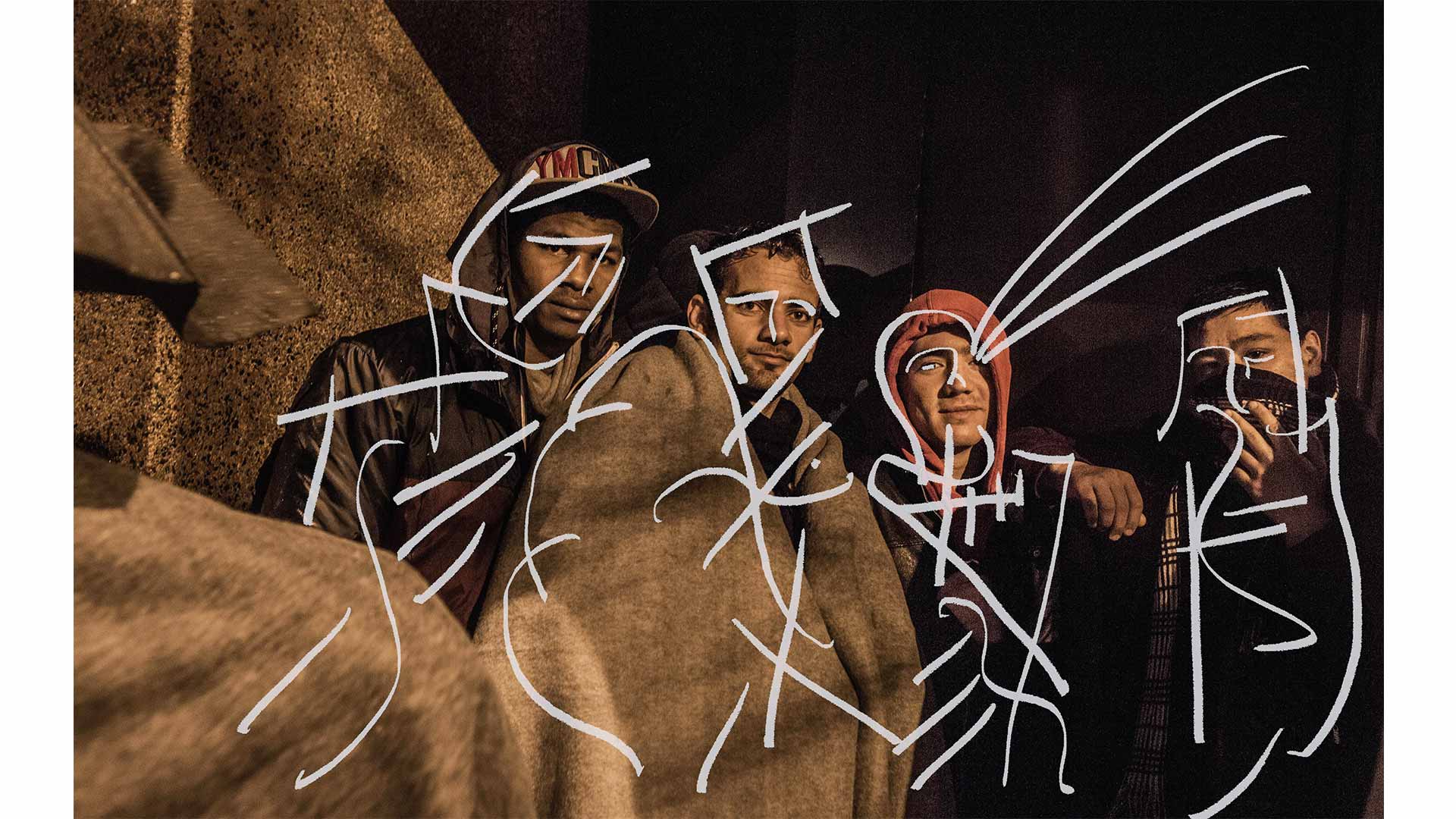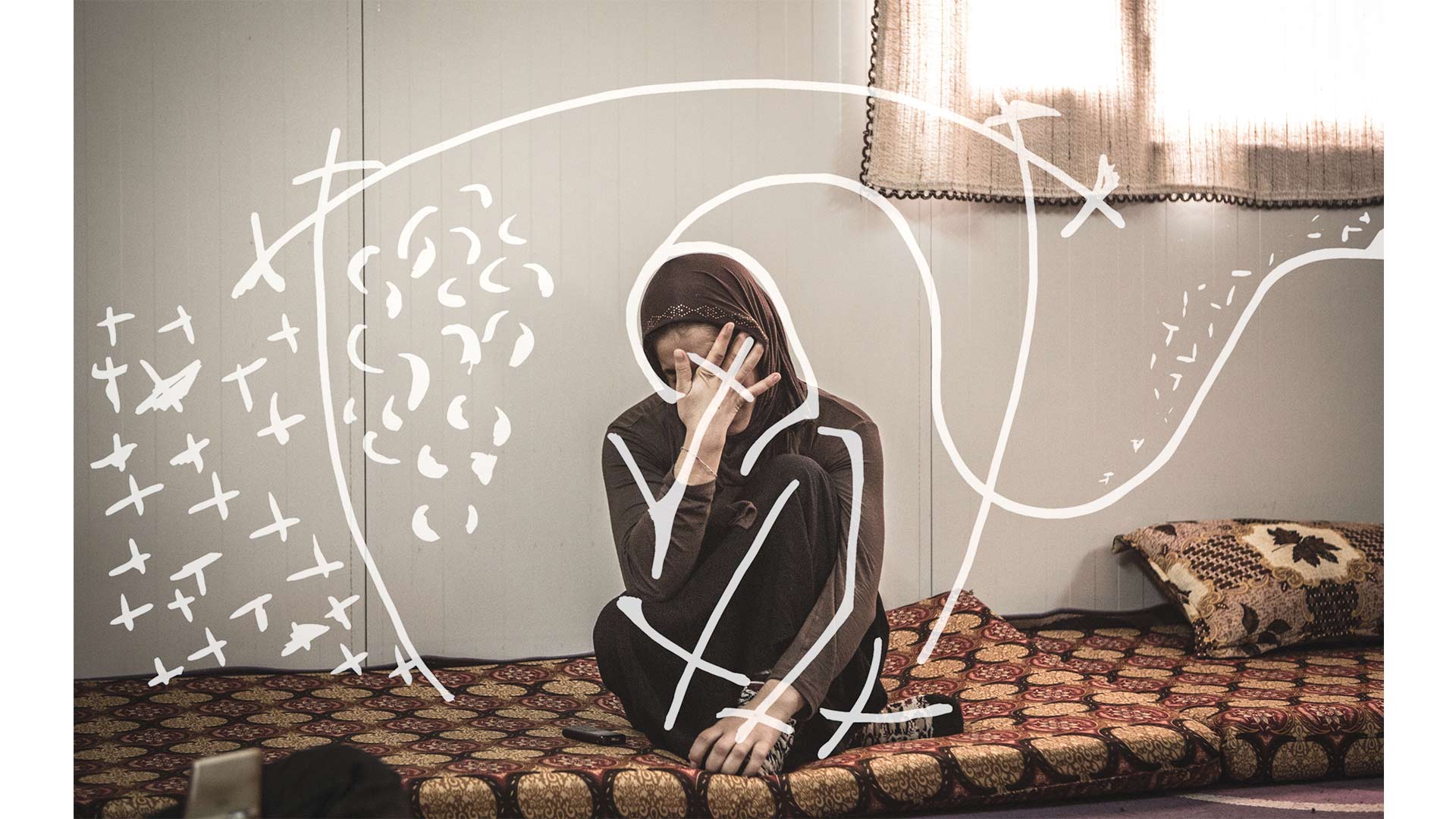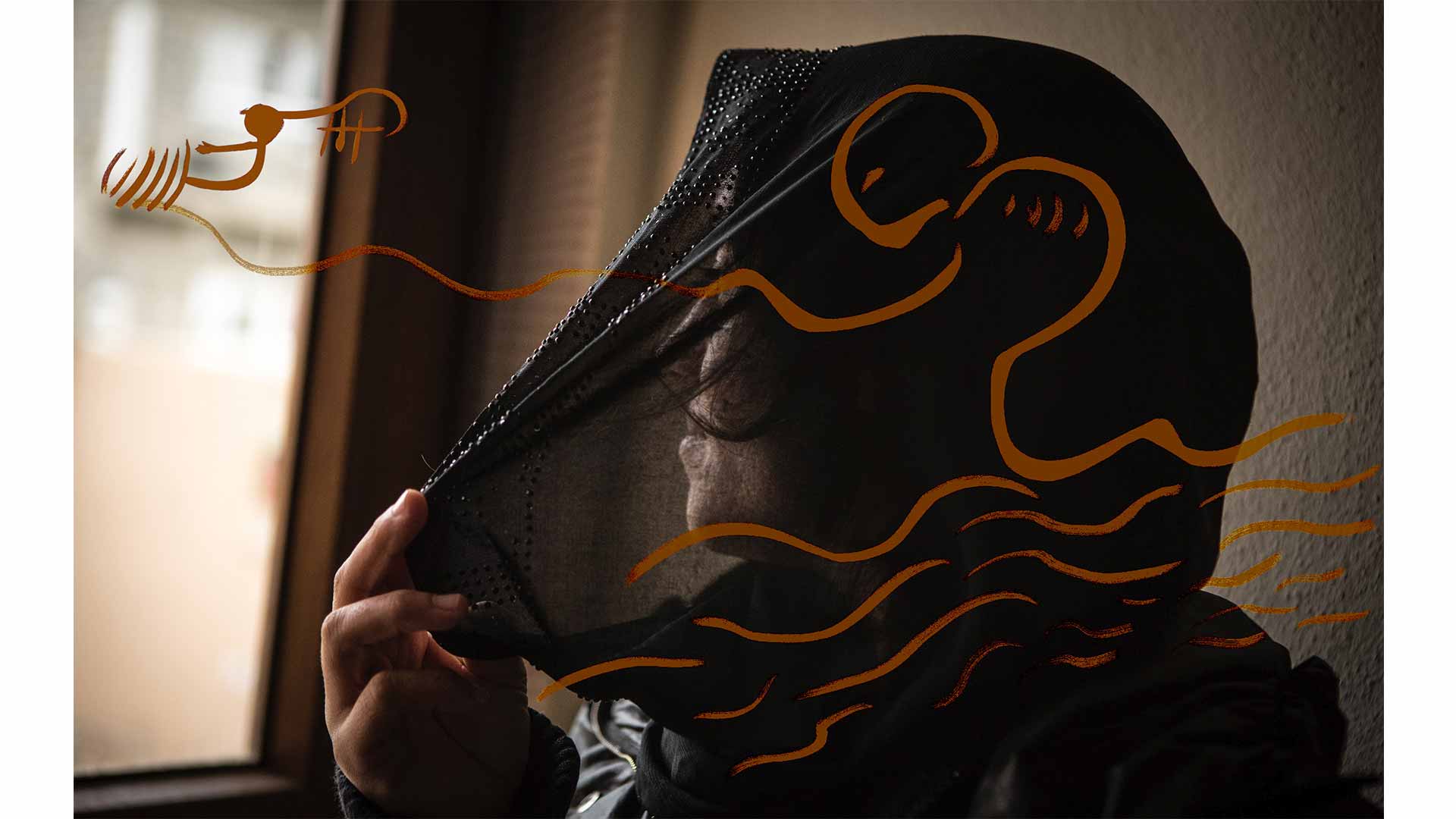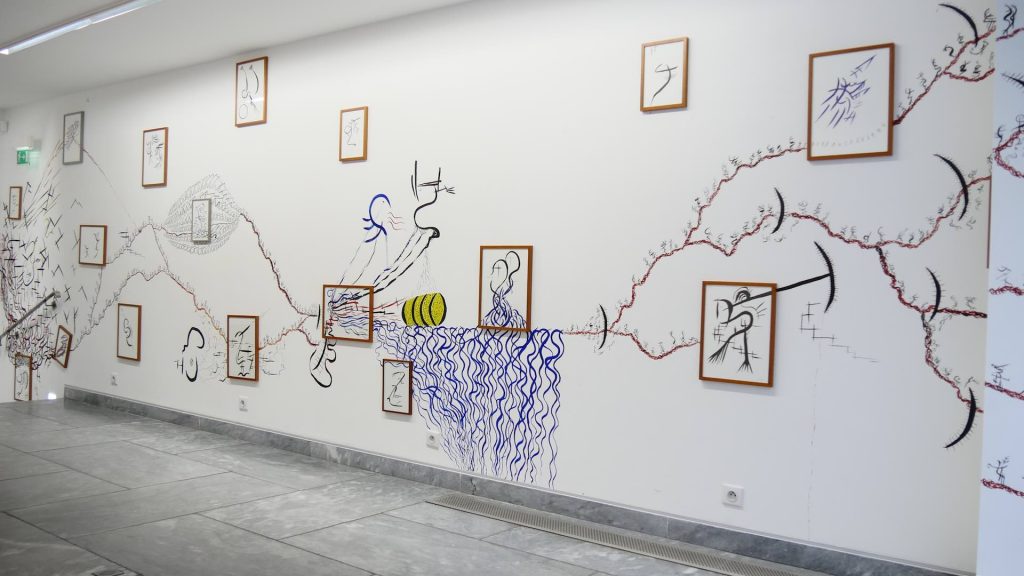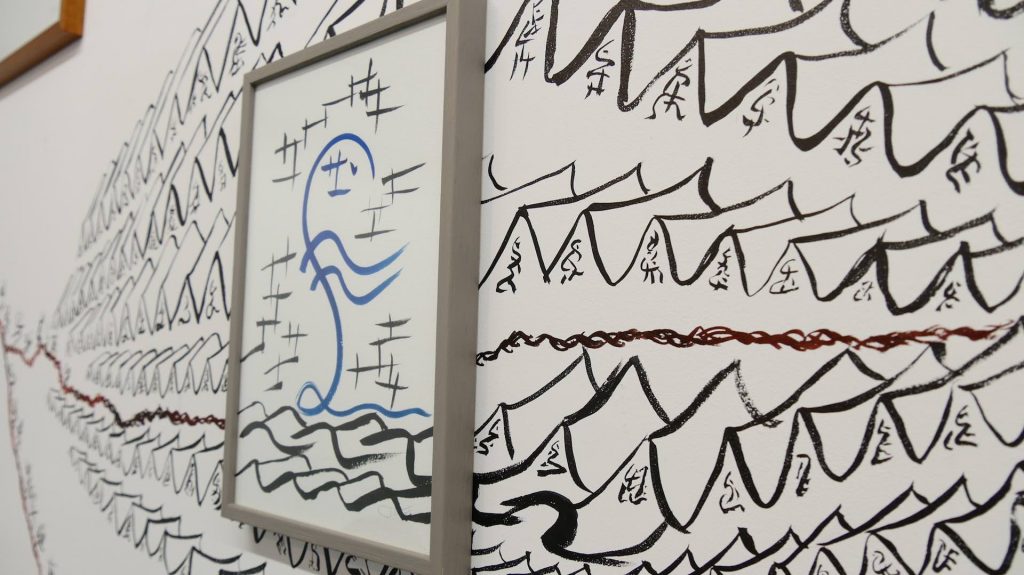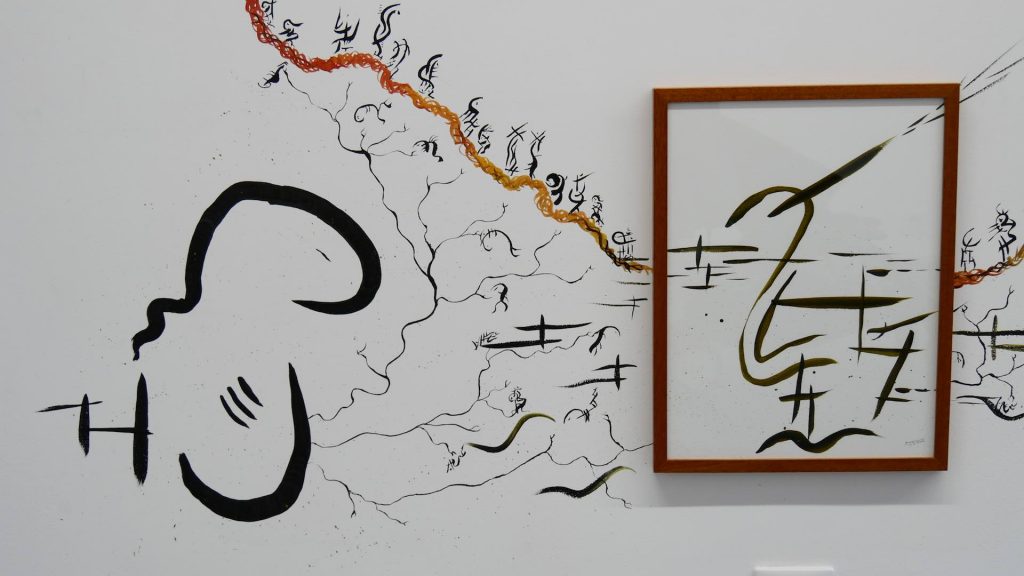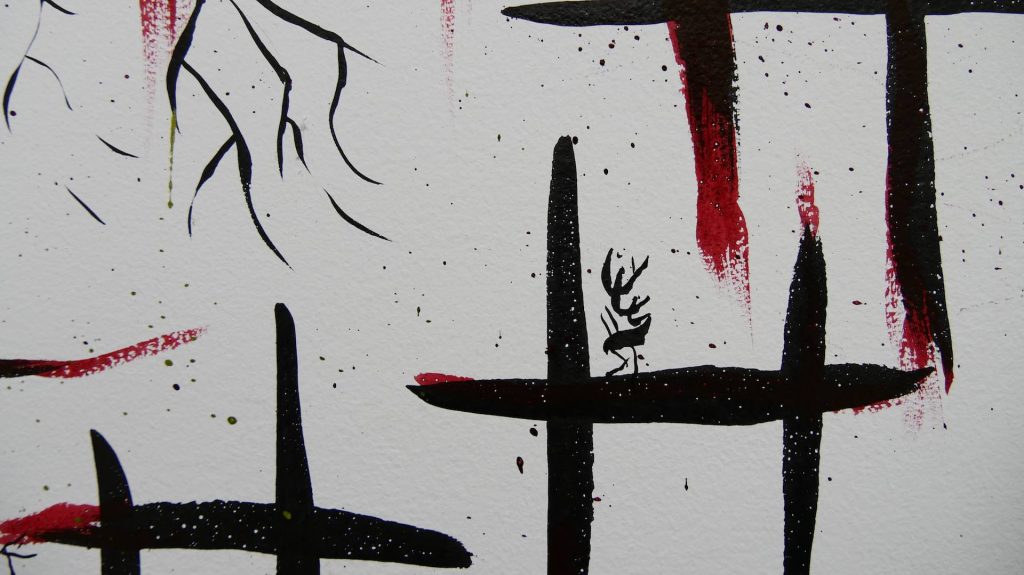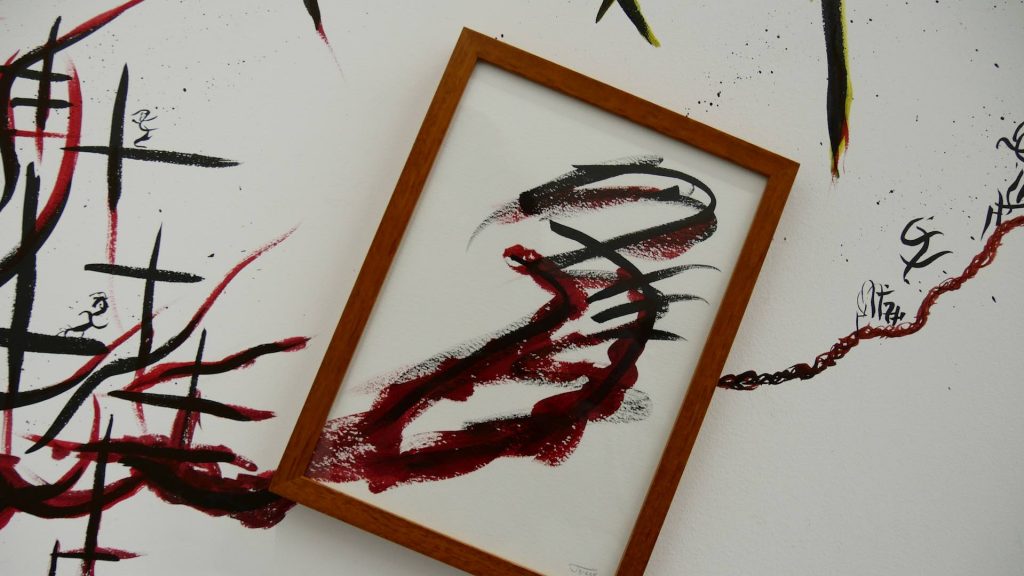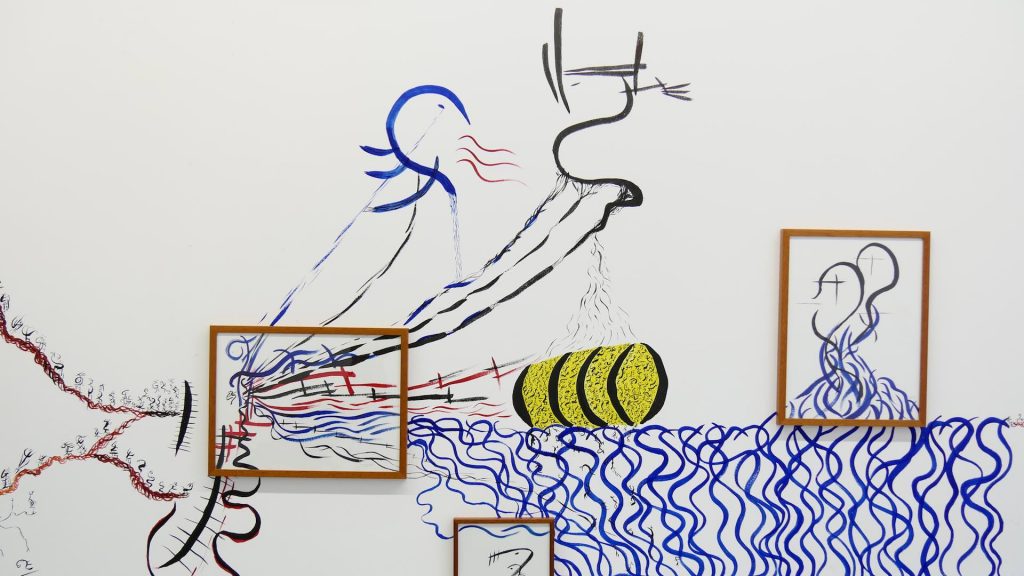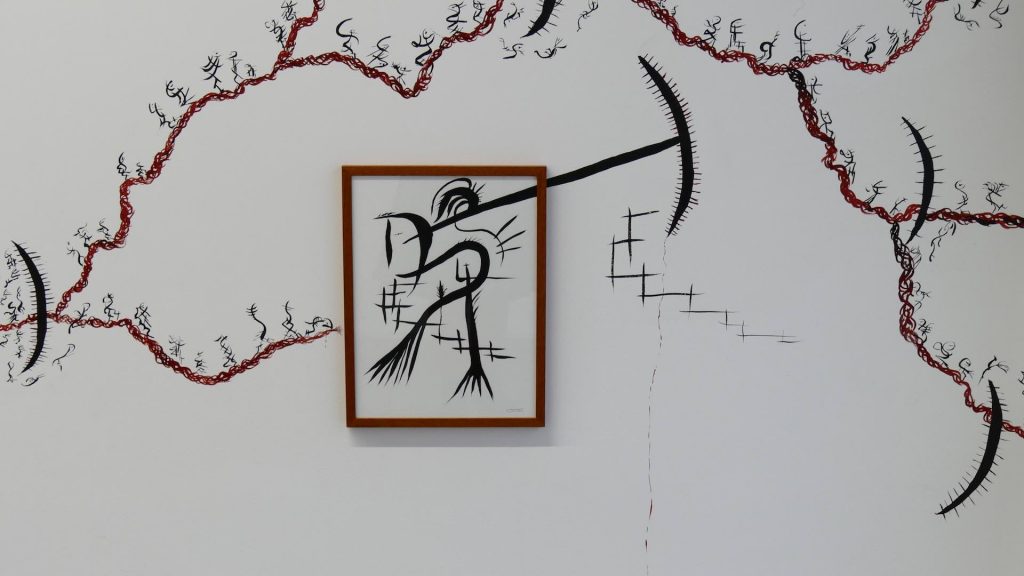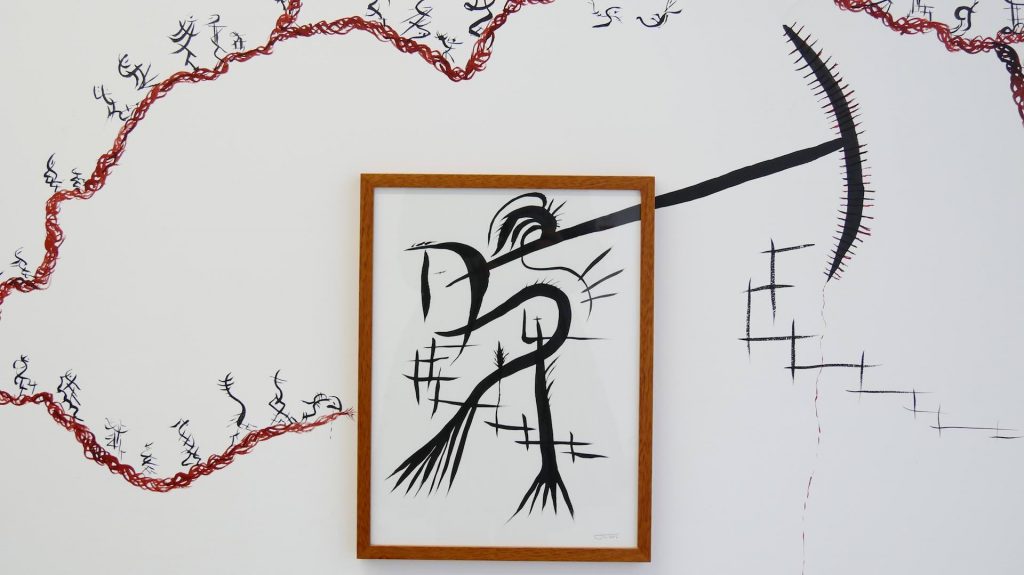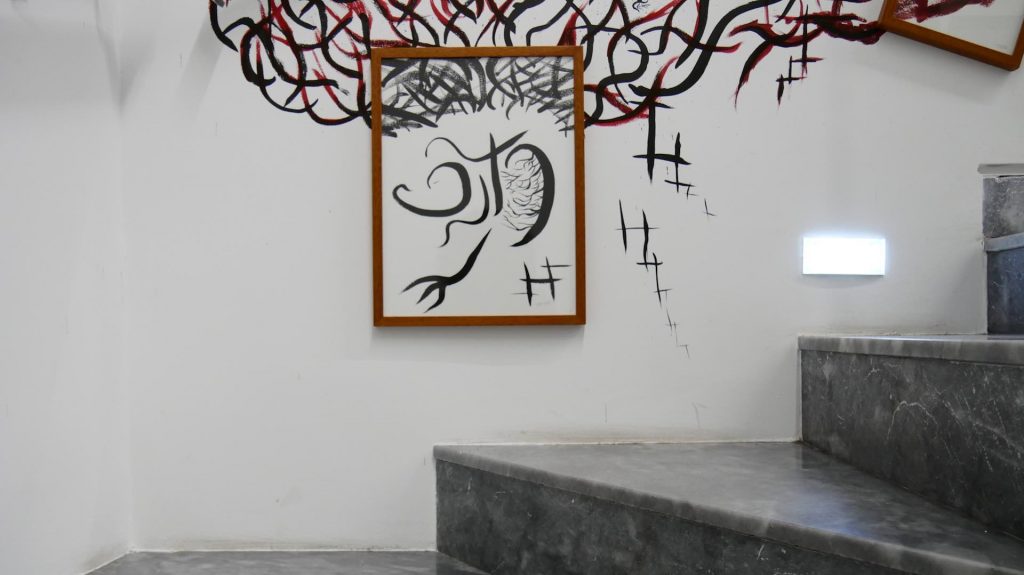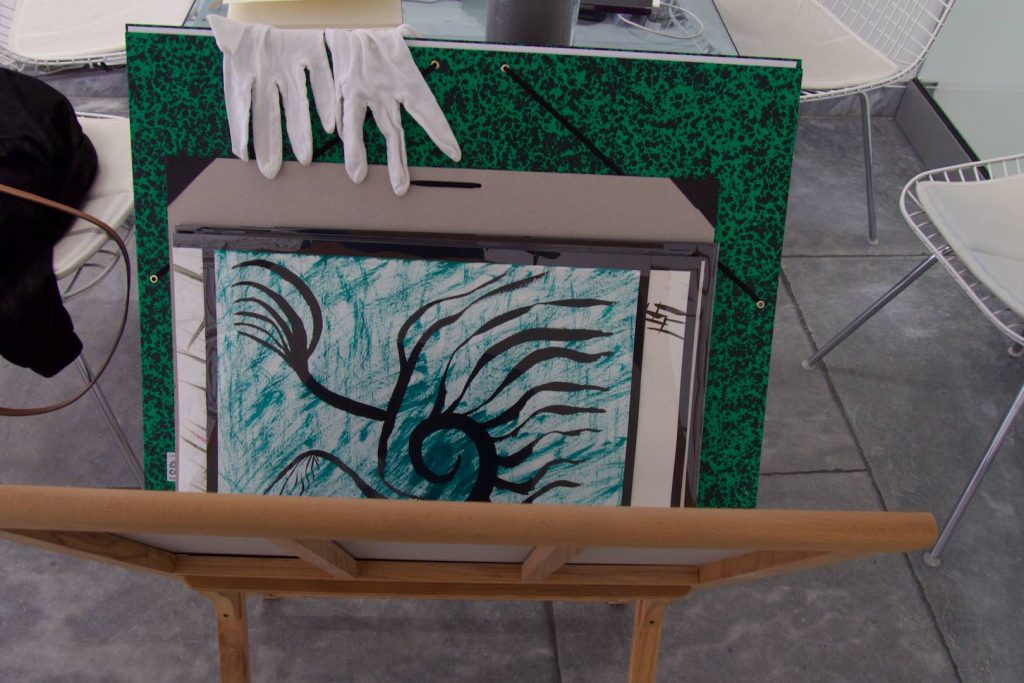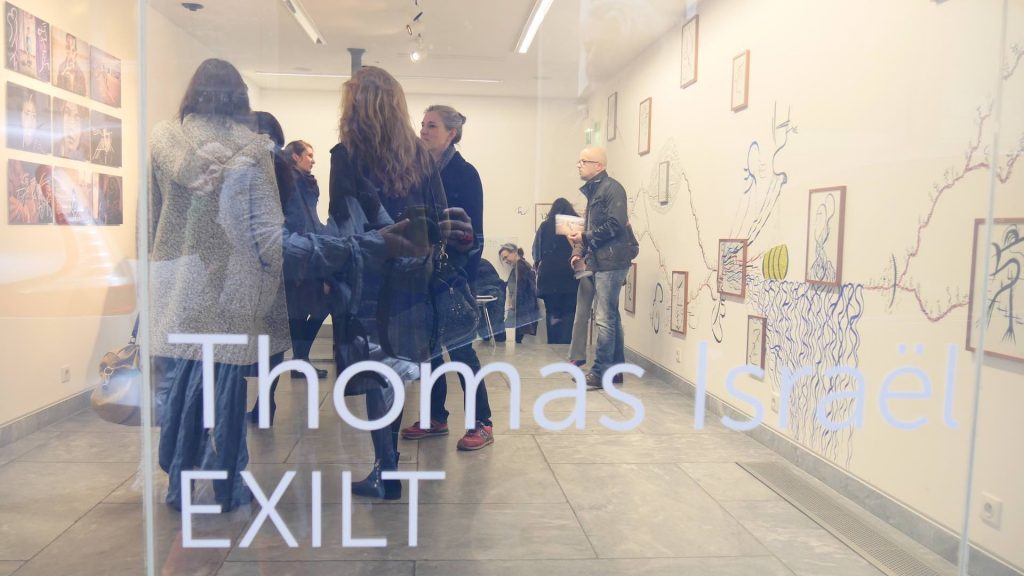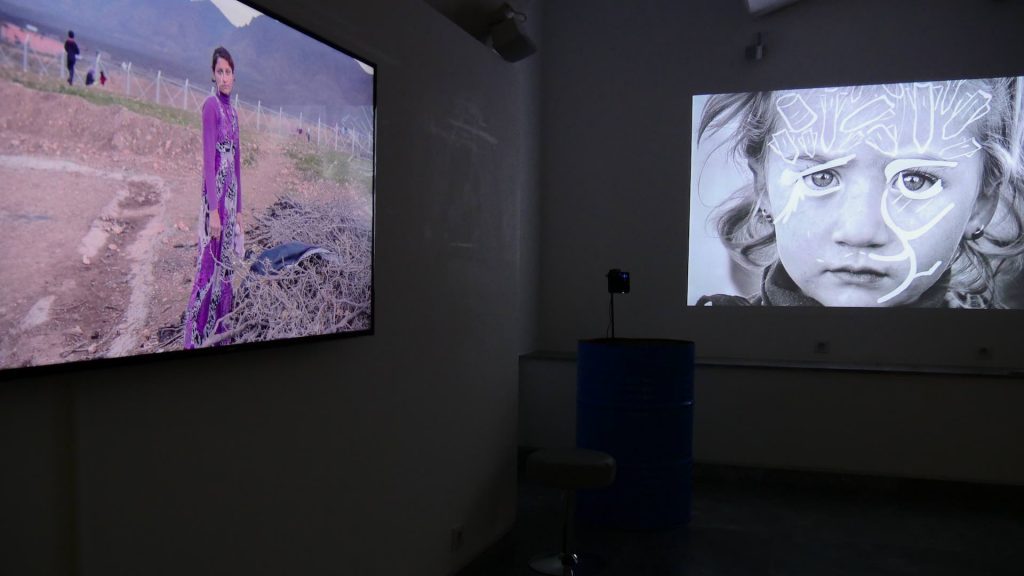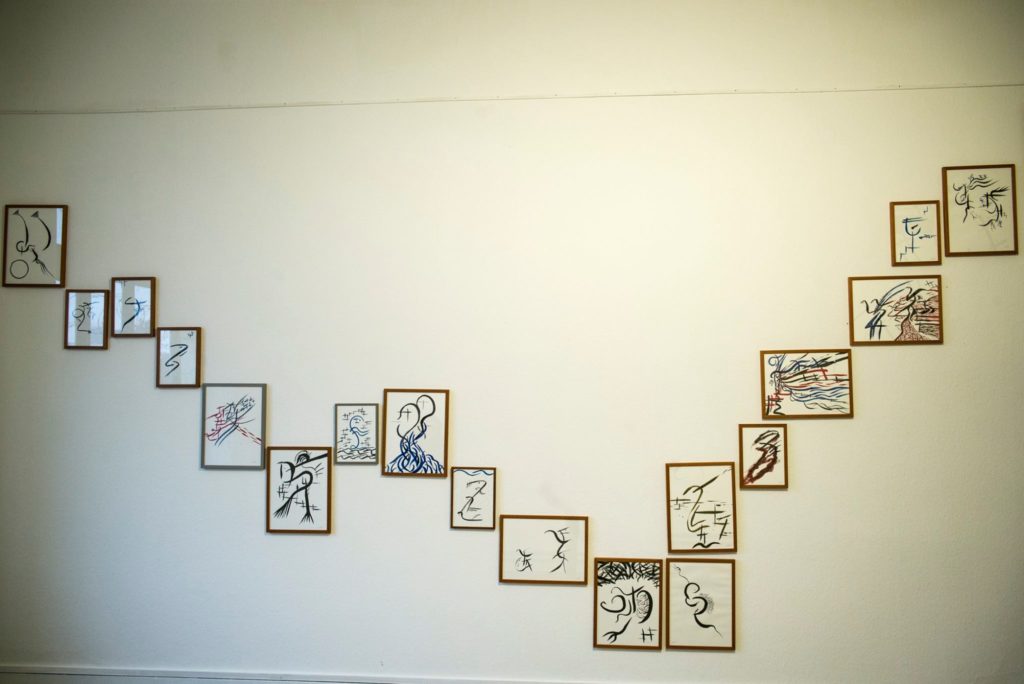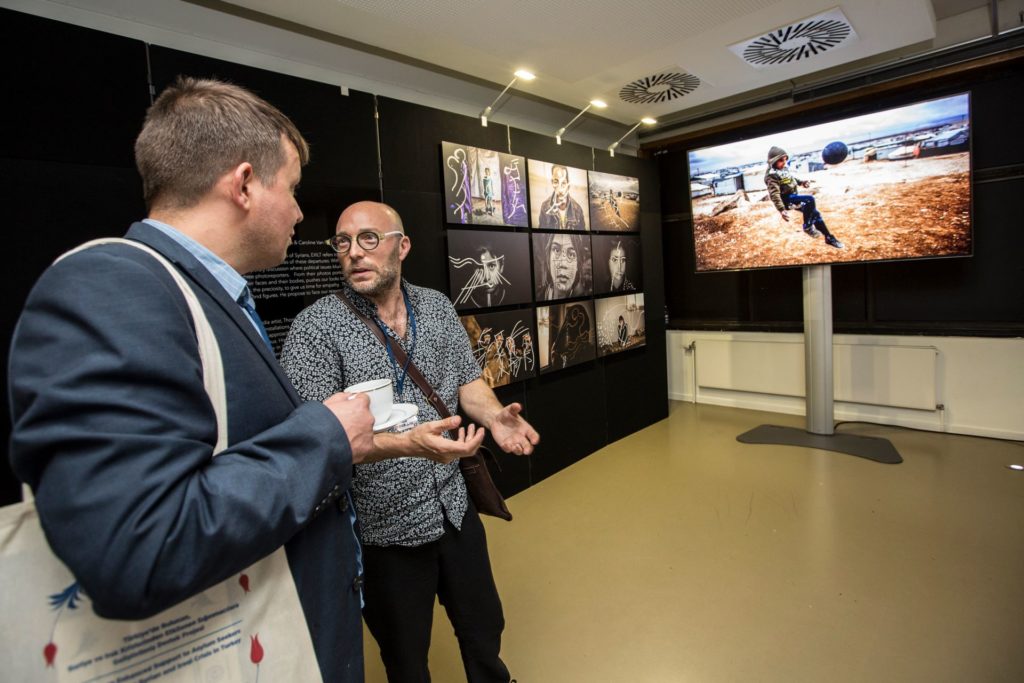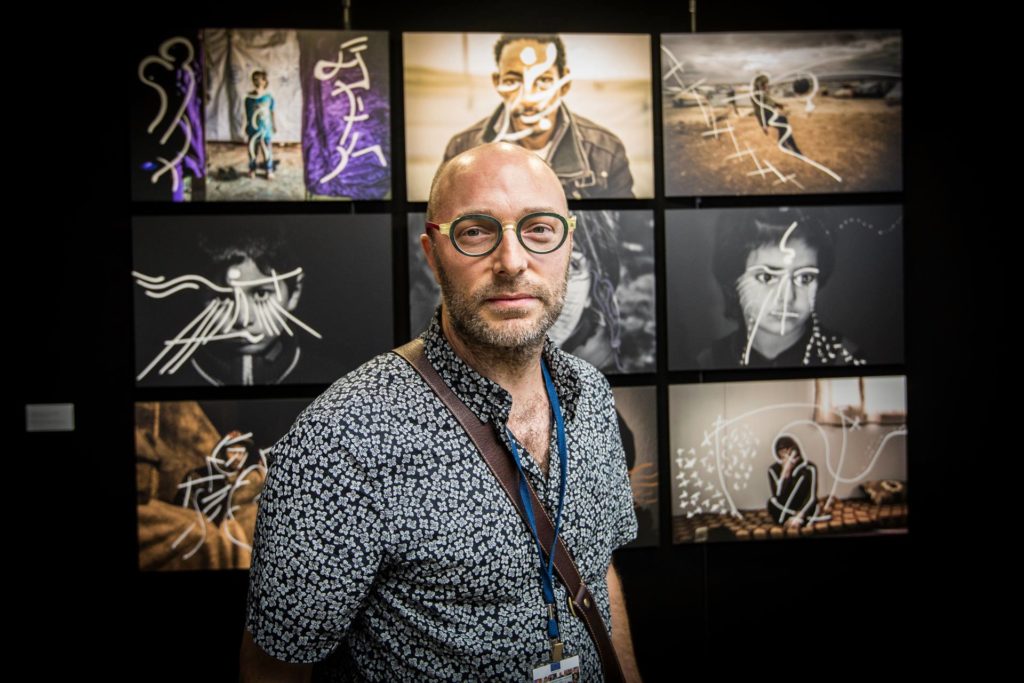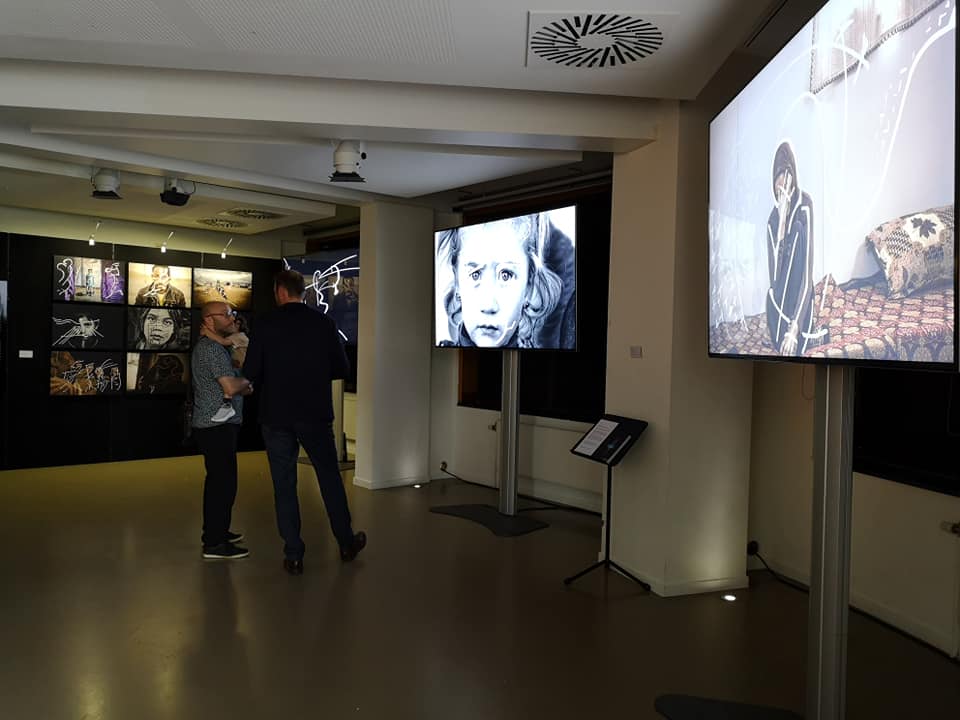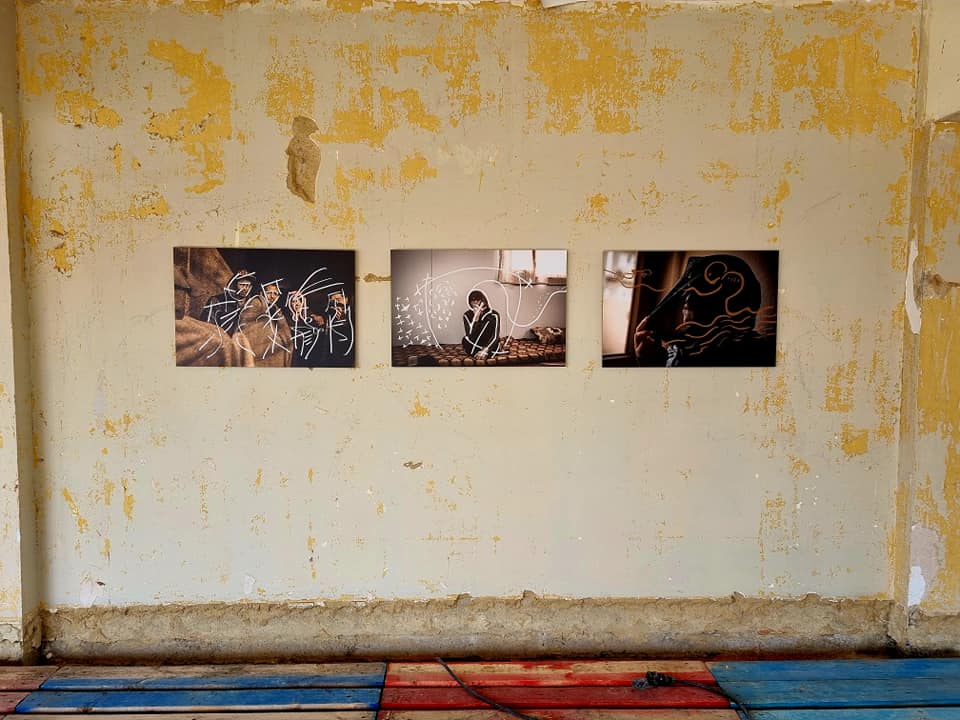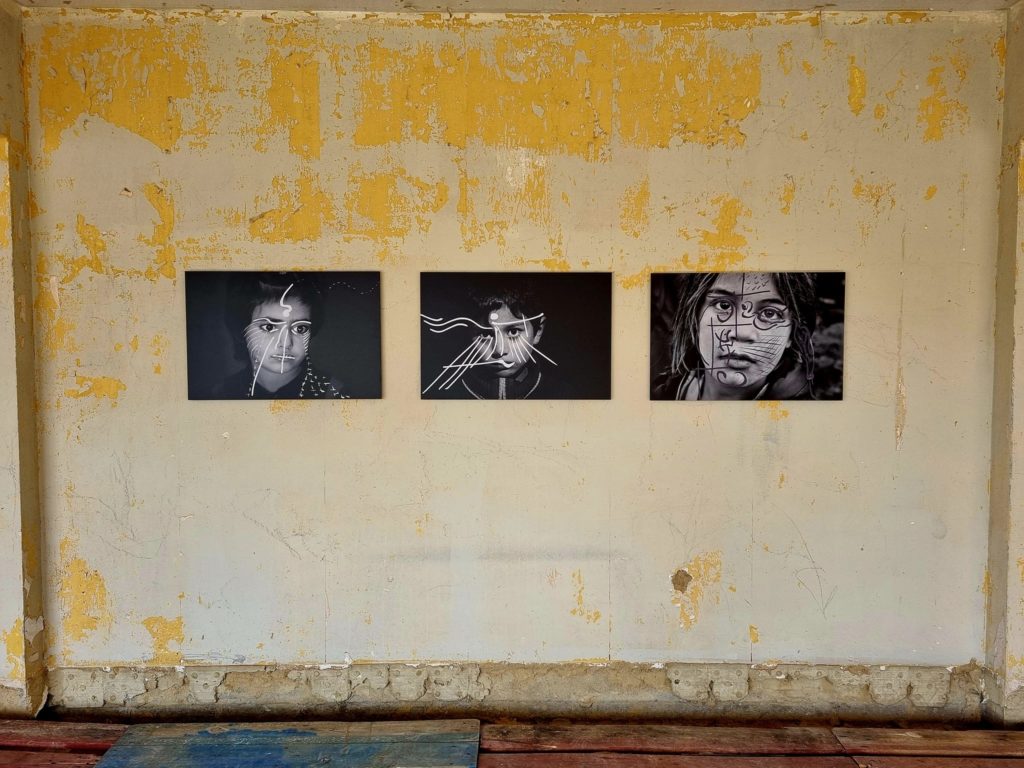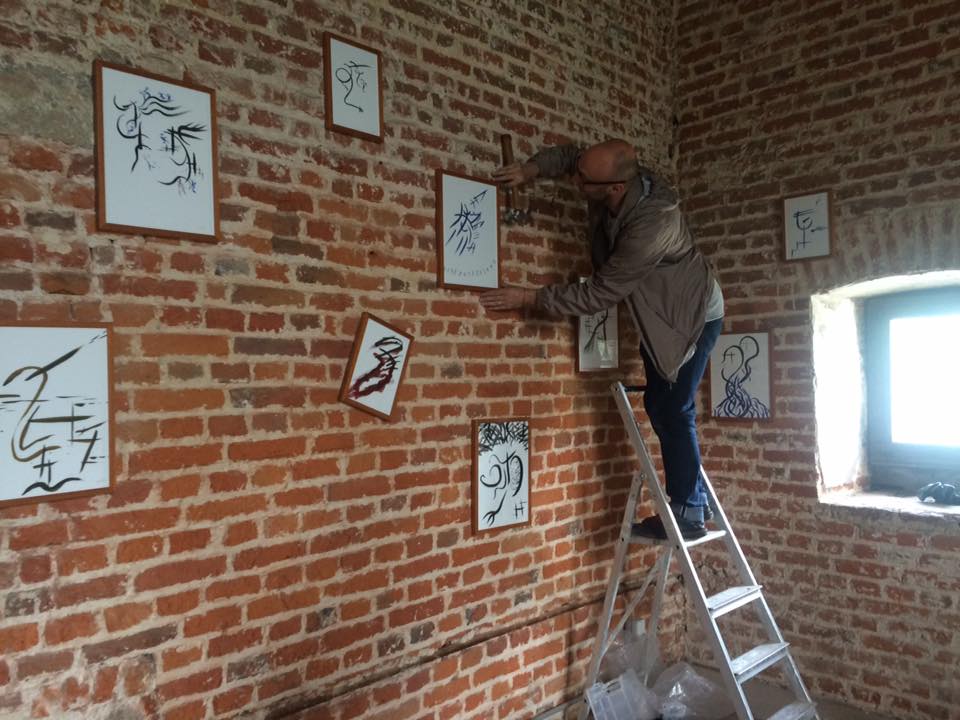Very touched by the Nobel Peace Price received by Nadia Murad. Until tonight she was for me the anonymous Yesidi women, who’s photo portrait was made by Johanna De Tessieres and on witch I spend hours drawing for our EXILT exhibition pictures and video. At the time, she was hiding under a fake name, in a secret camp in Irak with other Yesidi women former sexual slave of Daesh. May her people find with this Nobel Price more recognition for their suffering and genocide, on their long path to reconstruction.
Fusion of two words, “Exile” and “EXIT”, the title of Thomas Israel’s third exhibition at the Gallery Charlot refers to the urgency of getting out of a country and to the consequences of these inevitable departures.
Son and grandson of refugees, Thomas Israel tackles the problem of the forced exile of thousands of Syrians. On this occasion, he created an Indian ink mural fresco on the wall of the Gallery, an allegorical passage that leads us on the footsteps of Syrian exodus. Each sign, tiny but unique, represents a life on hold.
With an attempt to refocus on humanity in a contemporary discussion where political issues blurred the human drama, he collaborated with three photoreporters to create 3 videos and 9 pictures: Reza (National Geographic/World Press Photo Award/Infinity Award), Johanna de Tessieres (La Libre/Paris Match/Handicap International) and Olivier Papegnies (La Libre Belgique/Médecins du Monde/Nikon Photo Press Award).
From their photos portraits of exiles at different stages of their journey – in the refugee camps in Lebanon, on the road, in the Jungle of Calais, or in front of the Foreign Office in Brussels – Thomas Israel draws signs, curves, lines, points on their faces and their bodies, pushes our looks to stay longer, in order to grasp the uniqueness, the preciosity, to imagine a before and an after. Thanks to this gesture, the immediacy of the picture extends into our imaginations and give us time for empathy.
Internal exile adds to the geopolitical drama that causes these victims forced departure. By its signs, Thomas Israel indicates a biographical track engraved on the bodies. A personal reading level is added to the original poignant photo : the artist interpretation is in relation to an inter-generational memory of the exodus. All these trajectories are transformed into a kind of alphabet, a writing of the artist, translating what language and reason cannot explain.
Thomas Israel suggest us to take a position beyond images and figures. He propose to face our responsibilities, our beliefs, our fears, our hopes, and invites us to refocus on Humanity
